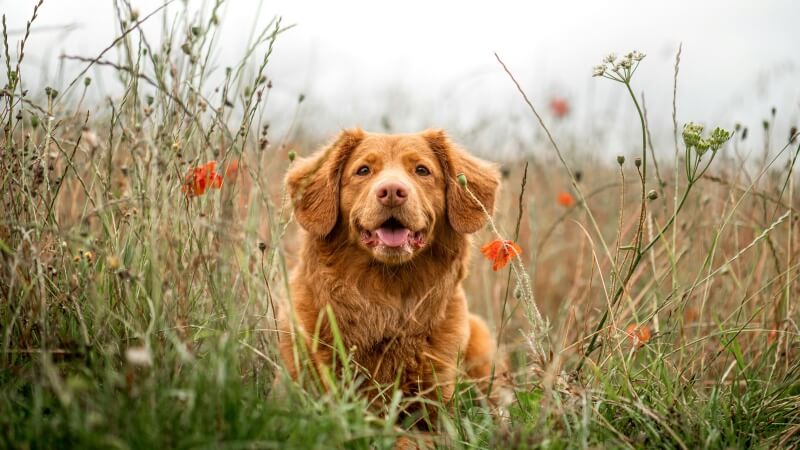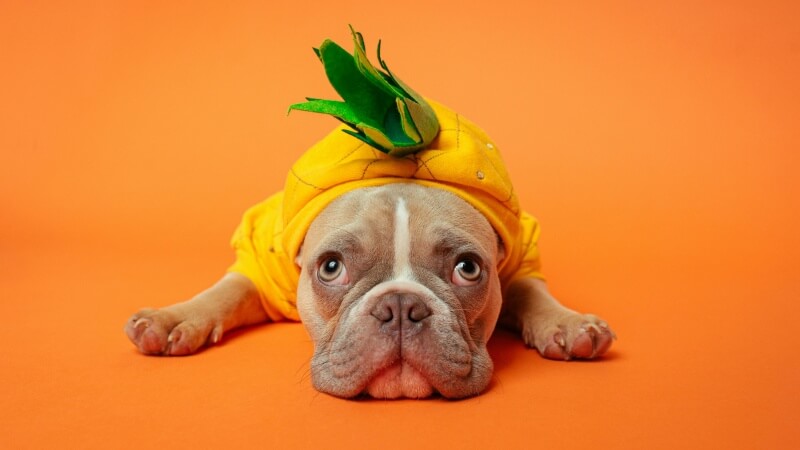
How To Craft A Cozy Cat Vest From Fabric Strips
Have you ever seen your feline friend lounging around and thought, “What could possibly make this picture more adorable?” The answer is simple: a cat

Have you experienced the frustration of purchasing a dog harness size chart by breed for your Labrador, only to watch them wriggle free during a walk? Or, have you brought home a harness that’s supposed to be the right fit for your small dog, like a pug, but found it utterly unusable due to mismatched clip sizes?
Consulting a breed-specific dog harness size chart is essential when choosing the perfect harness for your canine companion.
Remember, harness sizes and weight guidelines can vary significantly across different manufacturers. Furthermore, even within the same breed, individual dogs may have different measurements even within the same breed. Therefore, it’s crucial to accurately measure your dog’s girth and weight and refer to the specific sizing chart of the brand you are considering before purchasing.
Harnesses and collars have both been integral to dog handling for centuries.
While collars have historically been the more prevalent choice, certain breeds like the Rottweiler and Bernese Mountain Dog, as well as sled dogs in the Arctic, have been equipped with harnesses for pulling since the 1700s.
Recent medical research, however, highlights the potential harm caused by collars. Prolonged pulling or sudden jerks can lead to serious neck injuries in dogs, including whiplash, tracheal damage, hypothyroidism, and harm to ears, eyes, and nerves.
In contrast, a harness distributes pressure across a dog’s shoulders and upper body, greatly reducing strain on the neck. As such, harnesses are a significantly safer option for your dog than collars.
The PDSA’s 2019 PAW report indicates that nearly 25% of owners who rescue dogs from shelters cite leash pulling as a primary behavioral challenge. This issue can be quite exasperating and may detract from the enjoyment of dog walks.
The most straightforward approach to address a dog that pulls is by employing a high-quality no-pull harness.
Furthermore, combining the use of this harness with positive training methods can greatly assist in teaching your dog to walk calmly and obediently by your side, effectively modifying their behavior.
Just as human clothing sizes vary across brands, so do the sizes of dog harnesses. What one manufacturer labels as extra small may be considered small by another, and a medium in one brand could be a large in another.
While your dog’s breed can provide a rough estimate of their harness size (a Chihuahua will likely need an extra-small, whereas a Great Dane will typically require an extra-large), there’s considerable variation even within breeds. You might encounter unusually large Labrador Retrievers or surprisingly petite German Shepherds, not to mention mixed breeds, designer dogs, and mutts, which can come in any number of shapes and sizes.
It’s also important to consider the gender of your dog. For example, a male Samoyed may comfortably fit into a large harness, but a female Samoyed might be better suited to a medium.
Hence, relying solely on the breed for selecting a harness can be deceptive and might lead to an incorrect purchase. It’s crucial to treat the breed chart merely as a basic reference.
Additionally, it’s important to recognize that certain breeds are exceptionally large, which can complicate finding a suitable harness.
Breeds like the Boerboel or the Neapolitan Mastiff, which can weigh upwards of 160 pounds, may be too large for standard harness sizes offered by many brands. If you’re uncertain, it’s advisable to reach out to the manufacturer to confirm they have a harness that will adequately fit your dog.
In conclusion, it’s vital to always consult the sizing and weight charts provided by the manufacturer and accurately measure your dog before selecting a harness for them.
When considering harnesses for puppies, it’s crucial to think about their growth rate. Take a Golden Retriever puppy, for instance.
Being a large breed, a Golden Retriever puppy will outgrow several harnesses before reaching adulthood. For a Golden Retriever puppy, an extra-small harness might be suitable at about eight weeks old, when they typically weigh around 10 pounds, depending on the puppy’s specific size.
This puppy may require a small or medium-sized harness between four to five months old and is expected to progress to a large size by the time it reaches eight months.
Remember, this is merely a broad guideline, as puppies, much like human children, can have diverse growth patterns. Aim to tailor the harness choice to your puppy’s unique growth trajectory.
To measure your dog’s girth, start around his shoulders and extend to the deepest part of his chest, typically just behind his elbows. Use a tape measure to circle the circumference of his chest, beginning from the withers and around the ribcage at its broadest point.
This involves placing the start of the tape at the top of the shoulders, wrapping it around the ribcage at its largest part, and bringing it back to meet at the shoulders.
For many dog owners, a simple method to weigh their dog is by first weighing themselves on a bathroom scale, then weighing again while holding their dog. Subtract your own weight from the combined weight to find your dog’s weight.
If your dog is a small breed, like a four-pound Teacup Bichon Frise, using kitchen scales could be a feasible and cute option.
However, if your dog is too large to lift comfortably, visiting your veterinarian is the best approach. Your vet will have specialized scales to accurately weigh your dog.
To get an understanding of where your dog may fall in terms of size, weight, and breed, consider the PawSafe dog harness measurement guidelines. These guidelines are specifically for their no-pull harness, designed to be compatible with a doggy seatbelt, ensuring your pup’s safety during travel.
Ultimately, the harness outperforms the dog collar as it exerts less pressure on your dog’s throat, reducing the risk of health issues. A no-pull harness is an excellent choice for dogs that tend to be overzealous on their walks.
When determining the right harness size for your dog, considering the breed is useful, but crucially, you should measure and weigh your dog and consult the company’s dog harness size chart by breed and weight chart. If you’re uncertain about which harness to choose for your pup, feel free to leave a…
FAQ: Can a dog outgrow a harness, and how often should I check the fit?
As dogs grow, especially during puppyhood, they can outgrow their harnesses. It’s advisable to regularly check the fit of your dog’s harness, especially after noticeable growth spurts. For puppies, this might mean checking every month, while for adult dogs, a check every few months can be sufficient.
FAQ: How do I know if a harness is too tight or too loose on my dog?
A properly fitting harness should allow you to slide two fingers under the straps. If you can’t fit two fingers, it’s too tight. Conversely, if you can fit more than two fingers or the harness slides easily on the dog’s body, it’s too loose.
FAQ: Are there different types of harnesses for different activities?
Yes, there are various harnesses designed for specific activities. For example, a no-pull harness is ideal for walks, a padded harness might be better for hiking and long outdoor activities, and a lightweight harness could be suitable for running or jogging.
FAQ: How can I tell if my dog is comfortable in their harness?
Observe your dog’s behavior while wearing the harness. Signs of discomfort include trying to remove the harness, skin irritation, restricted movement, or changes in walking patterns. If your dog appears relaxed and moves freely, the harness is likely comfortable.
FAQ: What if my dog has a unique body shape or health condition?
Dogs with unique body shapes or health issues may require specialized harnesses. For dogs with medical conditions like arthritis, a harness that distributes pressure evenly and doesn’t strain sensitive areas is ideal. For unique body shapes, custom-fitted harnesses might be necessary. Always consult with your vet for recommendations based on your dog’s specific needs.
References:
Dog Weight Chart for popular dog breeds


Have you ever seen your feline friend lounging around and thought, “What could possibly make this picture more adorable?” The answer is simple: a cat

The moment you consider a dog hunting vest for your adventurous companion, you’re stepping into a world where safety meets functionality. This vest is not

The concept of a dog cooling vest is a game-changer for pet owners looking to enhance their dog’s comfort during those relentless summer days. Imagine

When you first consider crafting a tactical dog vest, it’s not just about embarking on a fun DIY project; it’s about ensuring your furry companion’s

Have you ever seen your feline friend lounging around and thought, “What could possibly make this picture more adorable?” The answer is simple: a cat

The moment you consider a dog hunting vest for your adventurous companion, you’re stepping into a world where safety meets functionality. This vest is not

The concept of a dog cooling vest is a game-changer for pet owners looking to enhance their dog’s comfort during those relentless summer days. Imagine

When you first consider crafting a tactical dog vest, it’s not just about embarking on a fun DIY project; it’s about ensuring your furry companion’s
Secure and Empower, Walk Responsibly
Copyright © 2025pettacticalharness. All Rights Reserved.